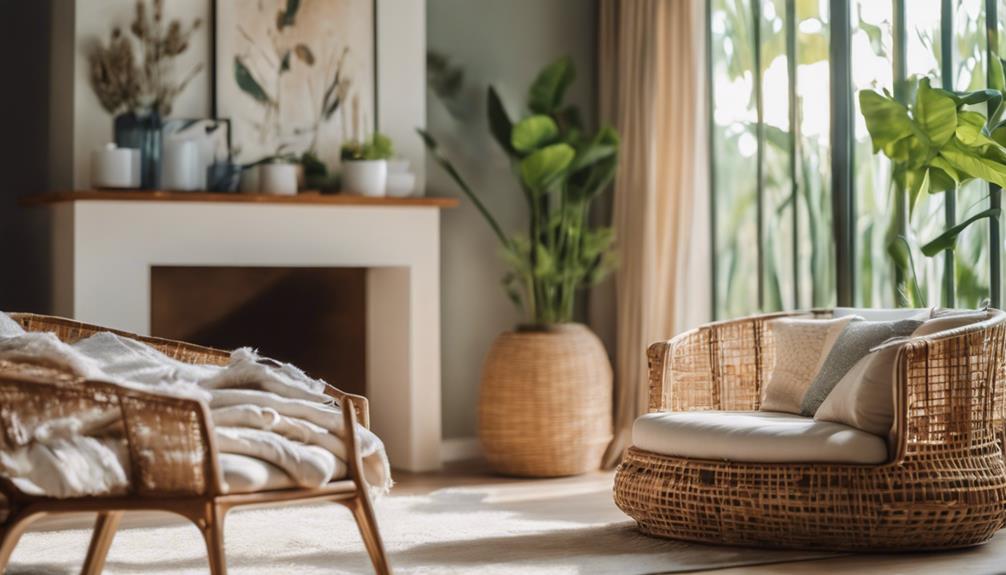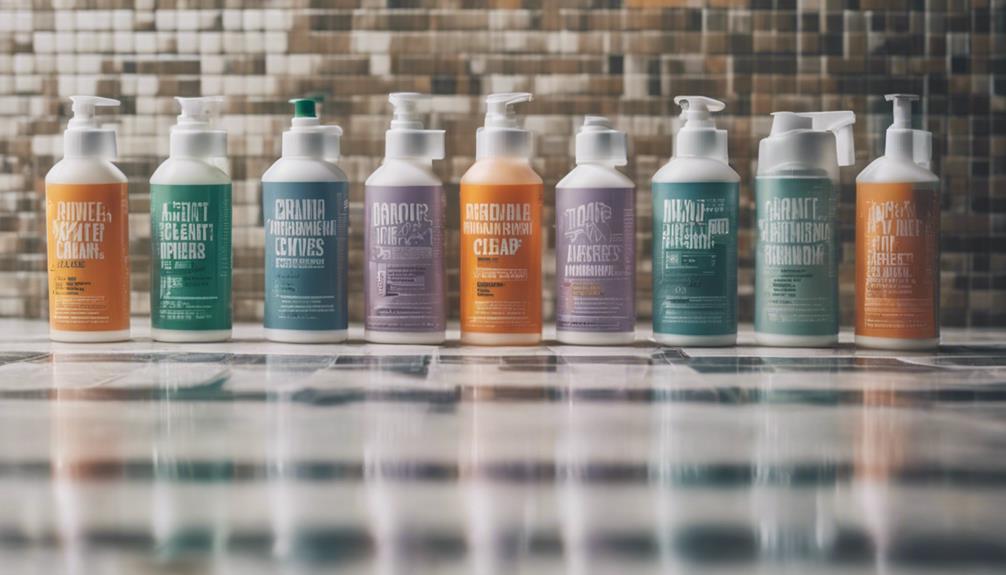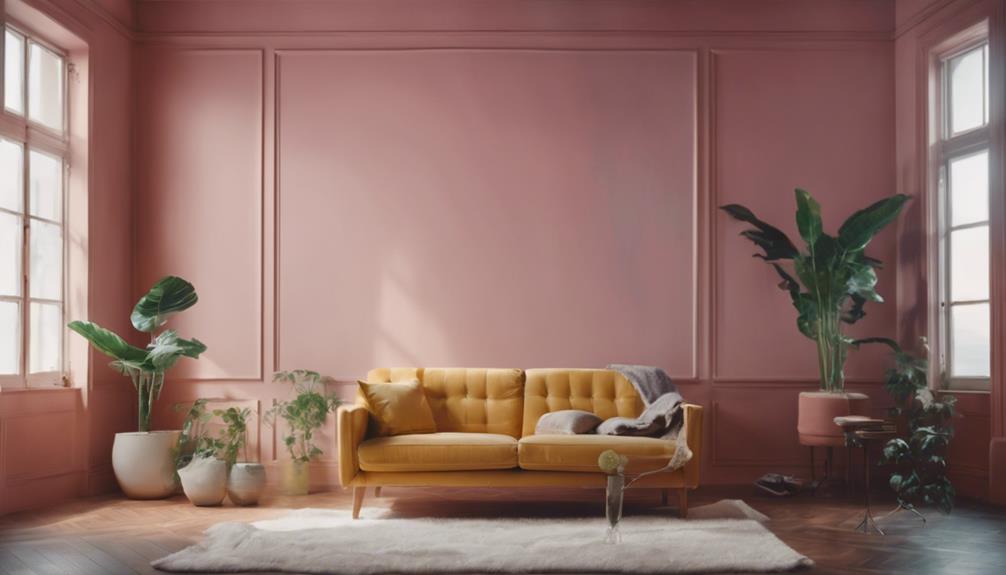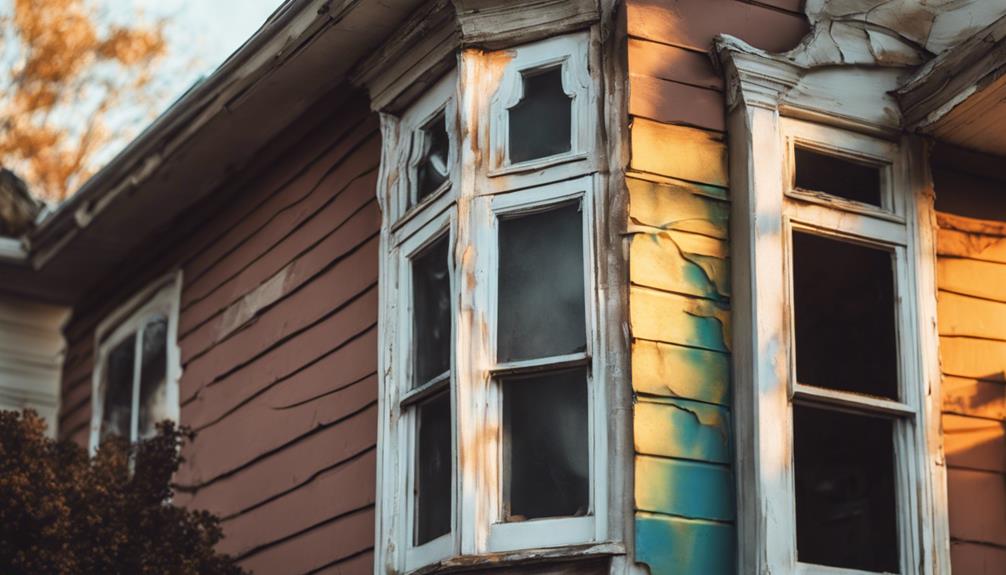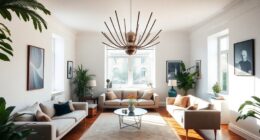When battling the heat, interior design can be your ally! Incorporate shading elements like awnings and umbrellas for relief from the sun. Opt for light-colored fabrics such as cotton or linen to reflect heat and create a rejuvenating feel. Boost air circulation with ceiling fans and place them strategically for maximum cooling. Create outdoor cooling areas with shade options, water features, and cooling fabrics. Harness natural shade by planting trees strategically. Design cooler indoor spaces with light colors, natural elements, and the use of water features. Implement cool color schemes for a calming effect and enhanced comfort. Discover how to beat the heat with clever interior design!
Key Takeaways
- Incorporate light-colored fabrics and cooling elements to reduce heat indoors.
- Use air circulation tools like fans strategically for improved indoor cooling.
- Design outdoor spaces with shade options and cooling fabrics for comfort.
- Utilize natural shade from trees to cool indoor environments effectively.
- Implement cool color schemes and water features for a refreshing indoor ambiance.
Utilizing Shading Elements for Cooling
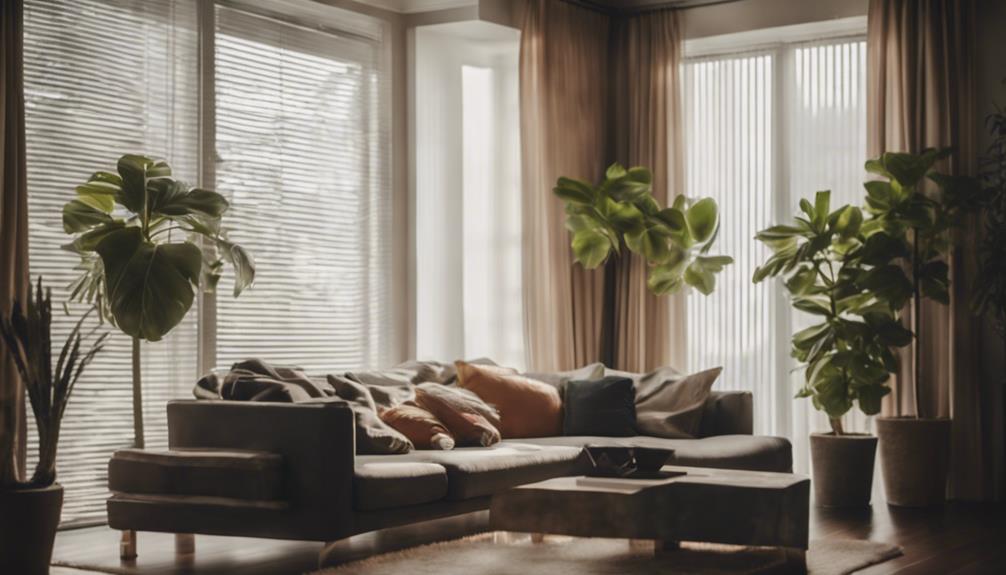
When designing for cooling, consider utilizing shading elements such as awnings or umbrellas to effectively reduce heat in outdoor spaces. These shading elements not only provide relief from the sun but also add a stylish touch to your outdoor area. By incorporating awnings or umbrellas, you create shaded spots where you can relax without worrying about the scorching heat. This simple addition can make a significant difference in how comfortable your outdoor space feels during hot days.
Shading elements like awnings also help protect your outdoor furniture from sun damage. They act as a barrier, preventing direct sunlight from fading or deteriorating your furnishings. Additionally, these elements contribute to the overall aesthetic appeal of your outdoor space, enhancing its visual appeal while keeping it cool and enjoyable.
Incorporating Light-Colored Fabrics
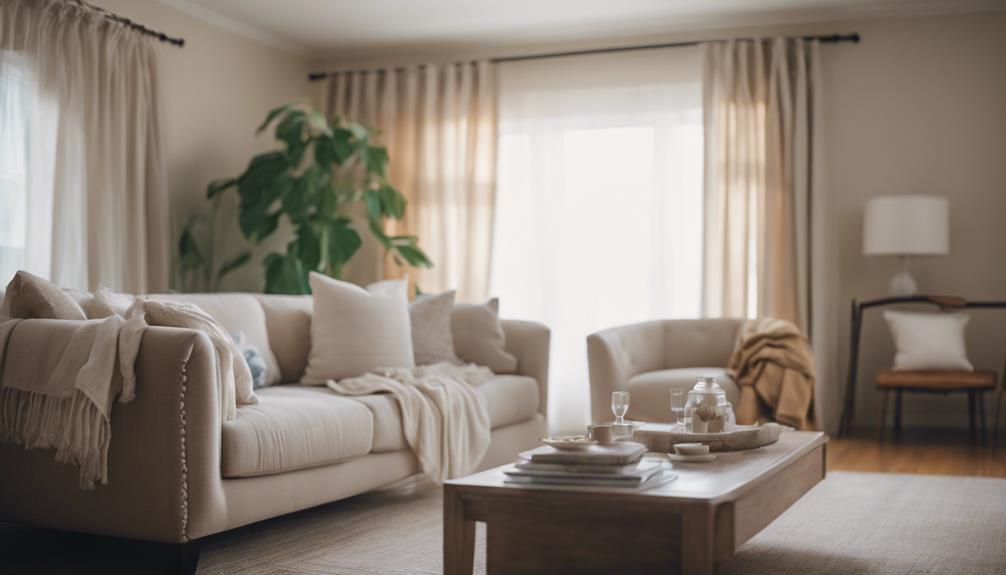
Consider enhancing the cooling effect in your outdoor space by incorporating light-colored fabrics that reflect heat and create a more invigorating environment. In hot climates, choosing light-colored fabrics for your outdoor furniture, cushions, and decor can make a significant difference in how you experience your outdoor space. Light-colored fabrics like cotton or linen not only look stylish but also help to keep the area cooler by reflecting the sun's rays instead of absorbing them. Opting for UV-resistant and heat-reflective fabrics can further amplify this cooling effect, providing a revitalizing oasis on your patio or outdoor lounge. By selecting the right materials and colors, you can transform your outdoor area into a more pleasant and enjoyable retreat during the warm weather.
| Light-Colored Fabrics | Benefits | Example |
|---|---|---|
| Cotton or Linen | Enhance comfort | Light-colored cushions |
| UV-resistant fabrics | Reduce heat retention | Heat-reflective umbrella |
| Heat-reflective fabrics | Provide a cooling effect | Light-colored awnings |
Enhancing Air Circulation With Fans
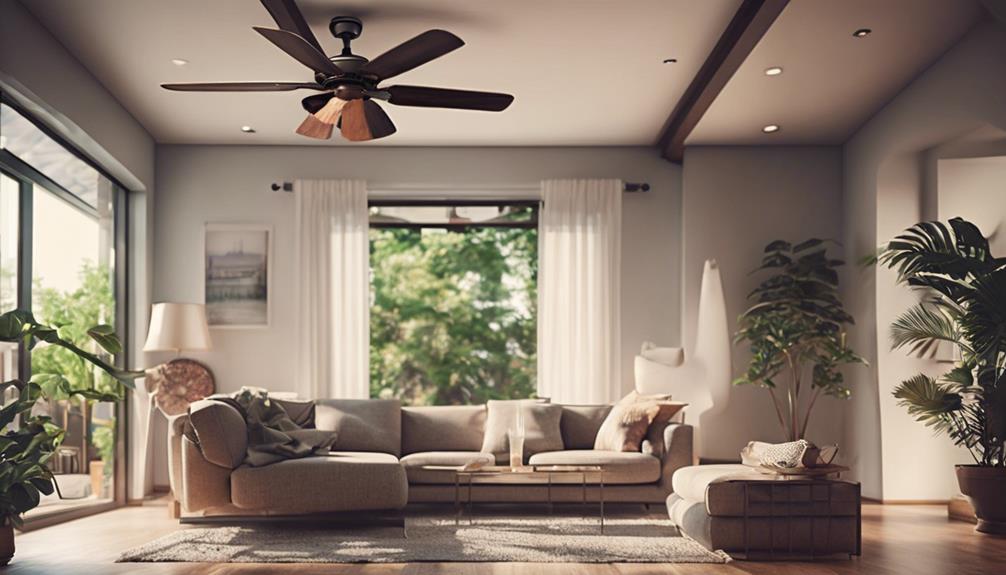
To improve air circulation and enhance cooling in your indoor spaces, consider installing a ceiling fan as a cost-effective solution. Ceiling fans can help create a breeze that makes you feel cooler by circulating the air in the room. Here are three tips to make the most of your ceiling fan for better air circulation and a more comfortable environment:
- Combine with Standing Fans: Using standing fans in conjunction with your ceiling fan can boost overall air movement, helping to distribute cool air more effectively throughout the room.
- Maximize Placement: Proper placement of your ceiling fan is key to maximizing its cooling benefits. Make sure it's positioned in the center of the room and at the right height to ensure the best airflow.
- Adjust Settings: Experiment with different fan speeds to find the setting that provides the best balance of air circulation and comfort. In hot weather, a higher speed can help create an invigorating breeze, while lower speeds can maintain a gentle circulation of cool air.
Creating Outdoor Cooling Spaces
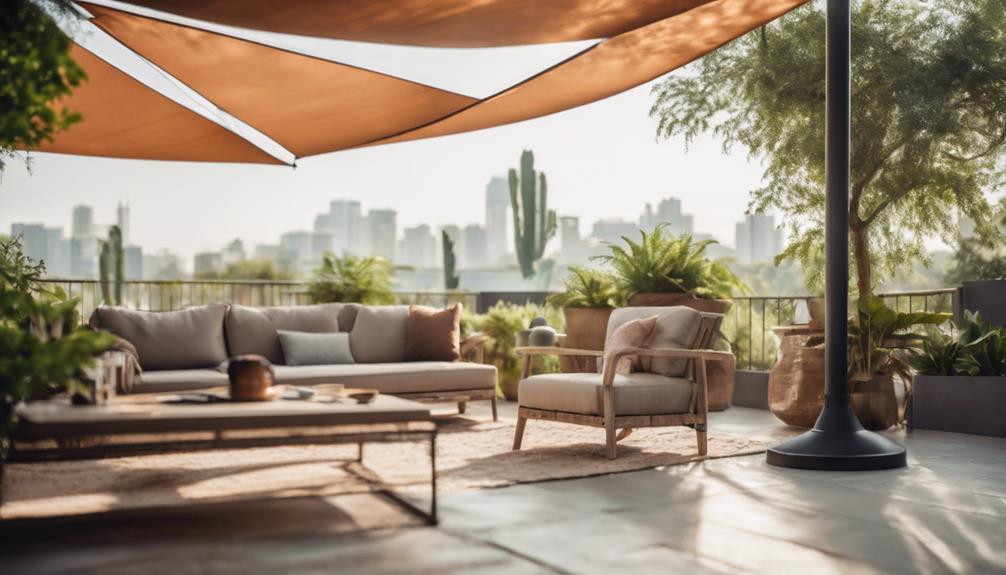
Looking to beat the heat outdoors? Consider adding shade options like pergolas or shade sails to block harmful UV rays and create a cool retreat.
Enhance the ambiance with outdoor water features such as fountains, which not only add a touch of tranquility but also cool the air through evaporation.
Opt for cooling fabrics in your outdoor lounging areas to promote airflow and keep you comfortable during those scorching days.
Shade Options
Create a relaxing outdoor retreat by incorporating shade options like awnings or umbrellas to keep your space cool and protected from the sun. When setting up your outdoor cooling oasis, consider the following:
- Awnings: These can be attached to your home or freestanding, providing versatile shade solutions that block the sun and reduce heat absorption into your outdoor space.
- Umbrellas: Portable and adjustable, umbrellas offer flexibility in shading different areas of your outdoor retreat, allowing you to move them as the sun's position changes throughout the day.
- Outdoor Fans: Installing outdoor fans can help circulate air effectively, creating a gentle breeze that enhances comfort and keeps you cool during hot weather.
Water Features
Enhancing your outdoor space with water features can greatly contribute to creating a cool and relaxing oasis during hot weather. Installing a swimming pool or incorporating water elements like fountains or ponds can help you stay cool and comfortable outdoors. These water features not only add value to your property but also enhance the overall outdoor living experience.
Consult professionals for guaranteeing safe installation to maintain functionality and aesthetic appeal. Water features play a significant role in passive cooling, as they can lower the ambient temperature and improve comfort in your outdoor areas.
Additionally, the visual and auditory appeal of water features, such as the sound of flowing water, can make your outdoor spaces more inviting and enjoyable for relaxation and entertainment.
Cooling Fabrics
To maintain a cool and inviting outdoor atmosphere, consider incorporating cooling fabrics into your outdoor space design. Here are three tips to help you create a rejuvenating outdoor oasis:
- Light-colored fabrics like cotton and linen: Opt for light-colored fabrics to reflect heat and keep your outdoor space cooler.
- Materials that feel cool to the touch: Choose materials like bamboo or silk that feel cool to the touch, enhancing comfort in your outdoor areas.
- Heat-reflective fabrics: Select heat-reflective fabrics for outdoor furniture and curtains to contribute to a more comfortable environment.
Harnessing Natural Shade With Trees
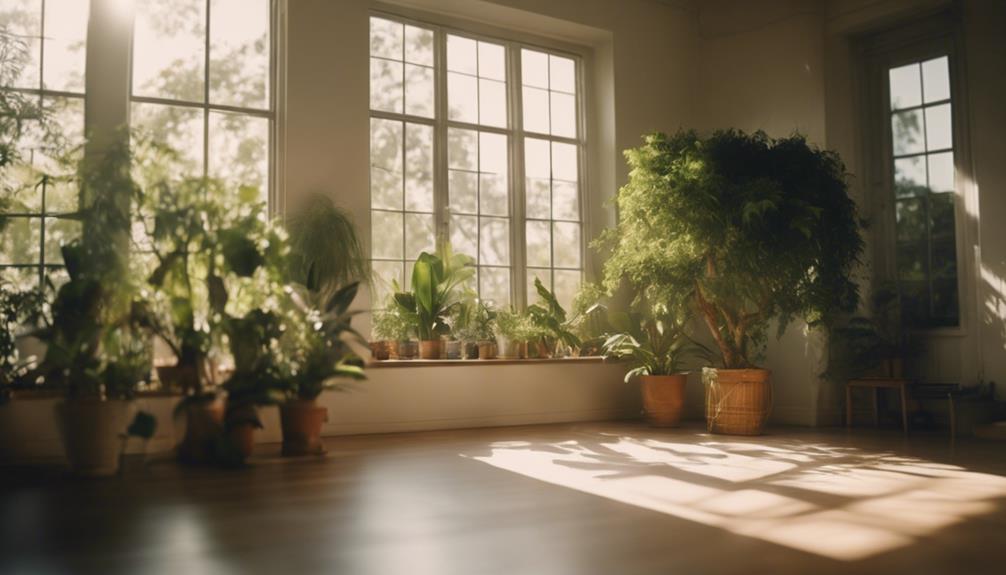
When it comes to cooling your home naturally, strategic tree placement is vital.
Choosing the right tree species, like deciduous ones, can offer shade in the summer and sunlight in the winter.
Remember that proper tree maintenance is essential for keeping your shaded oasis healthy and thriving.
Tree Positioning for Shade
Strategically positioning trees around your home can effectively harness natural shade to reduce indoor heat gain. Here are three key tips for maximizing the shade provided by trees:
- Deciduous Trees: Opt for deciduous trees when planning your landscaping. These trees offer shade during the hot summer months while allowing sunlight to filter through in the winter, helping to naturally regulate indoor temperatures.
- East and West Placement: Place trees strategically on the east and west sides of your home. Trees on the east side can block the morning sun, while those on the west side can provide shade from the intense afternoon heat.
- Window Coverage: Plant trees near windows to prevent direct sunlight from entering and heating up your home. This not only helps in cooling your interior but also adds to the overall beauty of your property.
Tree Species Selection
Selecting the appropriate tree species plays a crucial role in effectively harnessing natural shade to cool your home during hot seasons. Deciduous trees like Maple or Oak are excellent choices as they provide shade in the summer when their leaves are full but allow natural light to filter through during the cooler months when they shed. On the other hand, evergreen trees like Pine or Cedar offer continuous shade and protection from the sun's rays throughout the year. Strategic planting of trees around your home can greatly reduce indoor temperatures by up to 20 degrees Fahrenheit. Consider placing trees on the south and west sides of your house to block the sun's strongest rays in the afternoon, helping to minimize heat gain indoors.
| Deciduous Trees | Evergreen Trees |
|---|---|
| Maple | Pine |
| Oak | Cedar |
Maintenance for Healthy Trees
To maintain healthy trees for ideal shade coverage, regular pruning and trimming are essential. Here are three key maintenance practices to make sure your trees are thriving and providing excellent shade:
- Proper Watering and Fertilizing: Maintaining a consistent watering schedule and providing the right nutrients through fertilization are important for tree health and sustained shade provision.
- Pest and Disease Monitoring: Regularly check your trees for signs of pests and diseases to prevent damage and guarantee continuous shade benefits.
- Mulching: Applying mulch around the base of trees helps retain moisture, regulate soil temperature, and promote tree vitality, contributing to better shade coverage.
Designing for Cooler Indoor Environments
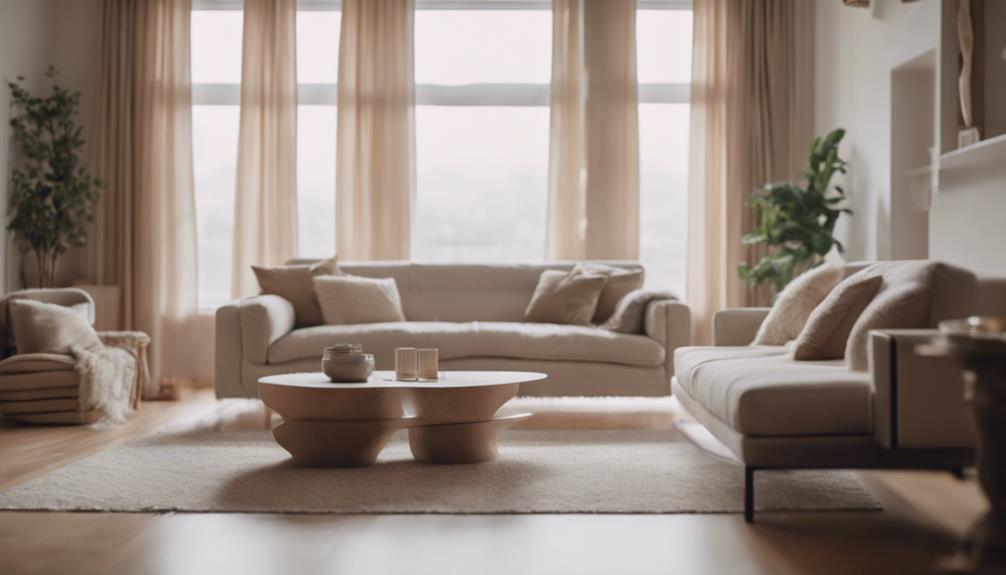
When designing for cooler indoor environments, consider incorporating light and airy color schemes like pastel blues and soft greens to help reflect sunlight and maintain a comfortable temperature. Adding natural elements such as indoor plants and wooden accents can also aid in cooling interiors and creating an invigorating ambiance.
To maximize airflow and ventilation, utilize ceiling fans and open windows during cooler times to help regulate indoor temperatures effectively. Avoiding heat-generating appliances and opting for cooling materials like cotton and linen for bedding can further enhance comfort during hot weather.
Maximizing Cooling Effects of Water Features
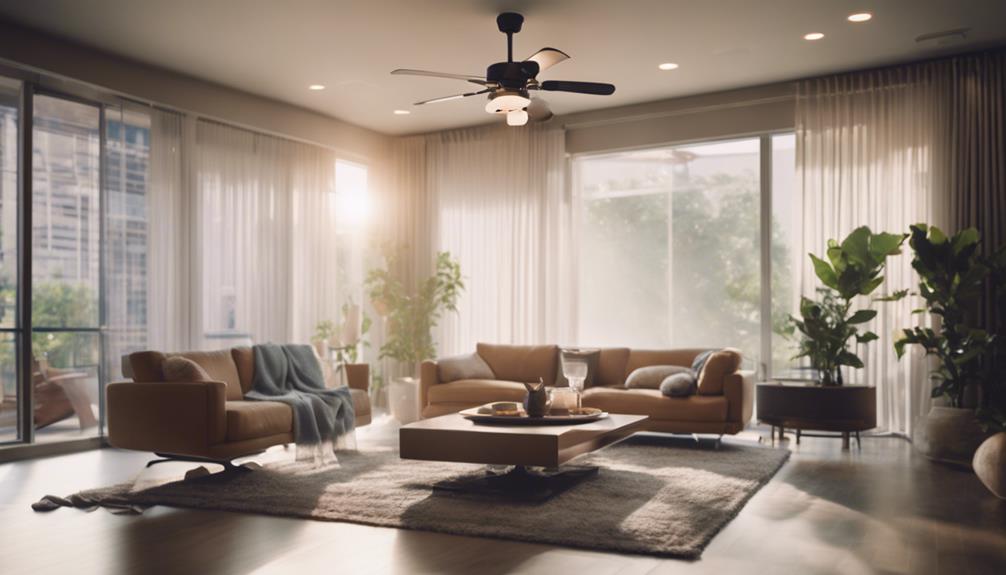
Consider incorporating water features like fountains and ponds to maximize the cooling effects in your outdoor space. Water features can notably lower ambient temperatures by utilizing evaporative cooling, where the evaporation from water surfaces absorbs heat, creating a revitalizing atmosphere.
Here are three ways to enhance the cooling effect of water features:
- Strategic Placement: Position water features strategically in your outdoor space to optimize the cooling effect. Placing fountains or ponds in areas where they can catch the breeze will help circulate the cool air they produce.
- Proper Maintenance: Regularly maintain your water features to make sure they function efficiently. Clean the water surfaces to promote better evaporation and consider adding aquatic plants to enhance the cooling effect.
- Size Matters: The size of your water feature can impact its cooling capabilities. Larger water features tend to have a greater cooling effect as they provide more surface area for evaporation, effectively reducing the surrounding temperatures.
Implementing Cool Color Schemes
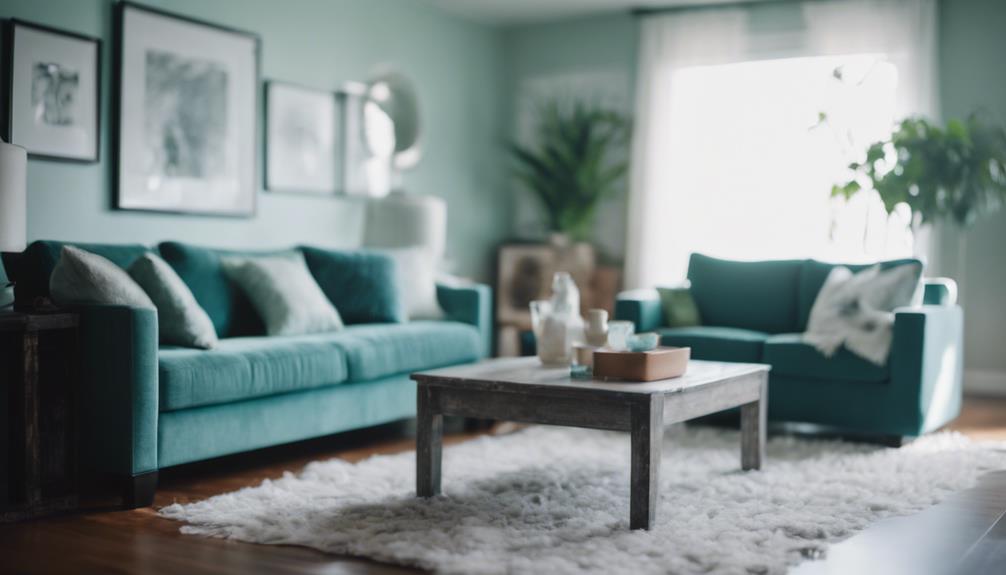
Cool color schemes, such as pastel blues and soft greens, can effectively reflect sunlight to create a soothing atmosphere in your living space. By incorporating light-colored sheer curtains and opting for calming whites, you can enhance this effect and maintain a rejuvenating ambiance indoors. Choosing cool color schemes is not only aesthetically pleasing but also a practical way to combat heat waves and keep your home cool during hot weather.
To emphasize the benefits of implementing cool color schemes, let's take a look at the following table:
| Cool Color Scheme Benefits |
|---|
| Reflect sunlight effectively |
| Create a soothing atmosphere |
| Aid in maintaining cooler interiors |
| Enhance the rejuvenating ambiance |
Balancing Aesthetics and Temperature Control
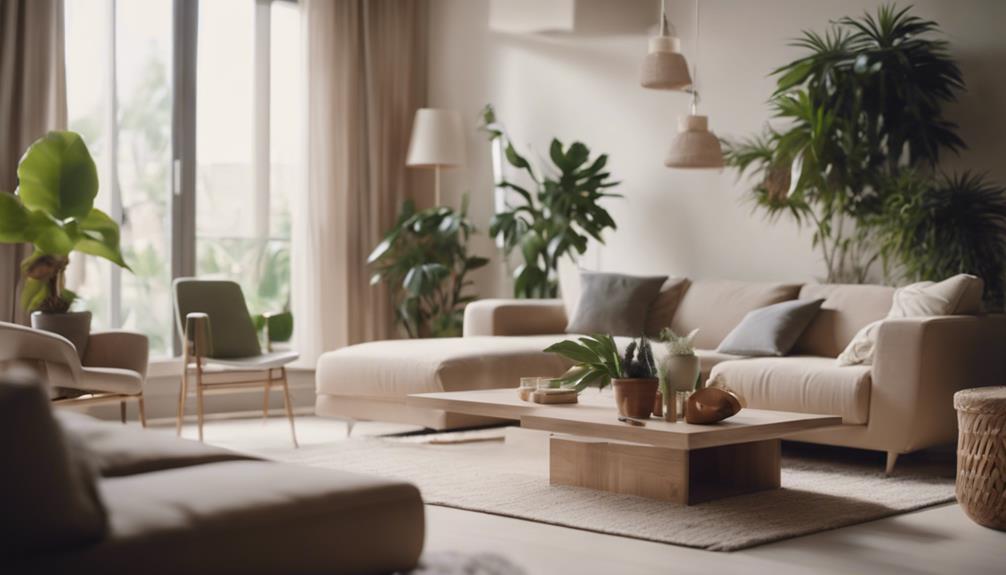
To maintain both a stylish look and comfortable temperature in your living space, it's important to strike a balance between aesthetics and effective temperature control strategies. Here are some tips to help you achieve this balance:
- Optimizing Airflow: Positioning furniture to allow for better air circulation and using fans strategically can help cool down your space without sacrificing style. Enhancing airflow prevents stagnant hot air pockets from forming, keeping your room breezy and pleasant.
- Choosing Cooling Materials: Selecting fabrics like cotton, linen, and bamboo for upholstery and curtains can aid in temperature control. These materials aren't only stylish but also breathable, allowing for better heat dissipation and creating a cooler atmosphere in your home.
- Light-Colored Aesthetics: Light and airy color schemes can visually expand your space while reflecting sunlight to keep temperatures lower. Embracing light-colored walls, furniture, and decor can help maintain a sense of coolness and brightness in your interior design.
Frequently Asked Questions
What Is the Biggest Problem in Interior Designing?
In interior design, addressing these challenges is essential for creating comfortable and sustainable living environments. The biggest problem often revolves around poor insulation and inefficient building designs. These issues lead to increased reliance on air conditioning systems, driving up energy costs and impacting comfort levels. Without proper ventilation and shading, indoor spaces struggle to maintain ideal temperatures.
Overuse of glass in architecture can also contribute to heat gain problems. Tackling these challenges is vital for creating comfortable and sustainable living environments.
What Problems Does Interior Design Solve?
Interior design solves various issues, enhancing comfort and functionality. It optimizes space, improves aesthetics, and boosts mood.
By incorporating natural elements, strategic layouts, and cooling materials, interior design combats heat waves and creates a rejuvenating environment. Efficient use of colors, furniture placement, and ventilation techniques contribute to cooler interiors.
Choosing the right design elements helps maintain a comfortable atmosphere, making your space a cozy retreat from the heat.
What Are the Disadvantages of Interior Design?
When considering the disadvantages of interior design, it's crucial to weigh the costs, potential disruptions, and upkeep involved. Expenses for furniture, decor, and professional services can add up quickly. Renovations may require temporary relocation and disrupt your routine. Trends can become outdated, leading to frequent updates. Changing tastes may leave you dissatisfied with previous choices. Maintaining intricate designs can be time-consuming.
These factors highlight the challenges of interior design beyond just the aesthetic appeal.
How Does Interior Design Help People?
Interior design plays a vital role in shaping how people experience and interact with their surroundings. By incorporating elements like color, furniture, and decor, interior design enhances comfort and functionality in homes and workplaces. It can improve mood, productivity, and overall well-being by creating visually appealing and organized environments.
Whether it's through maximizing space, implementing ergonomic solutions, or enhancing aesthetics, interior design plays an essential role in shaping how people experience and interact with their surroundings.
Conclusion
Now that you've learned how interior design can help beat the heat, you're ready to transform your space into a cool and revitalizing oasis.
By incorporating shading elements, light-colored fabrics, fans, outdoor cooling spaces, trees, water features, and cool color schemes, you can create a comfortable environment even on the hottest days.
So go ahead, get creative with your design choices and stay cool all summer long!
